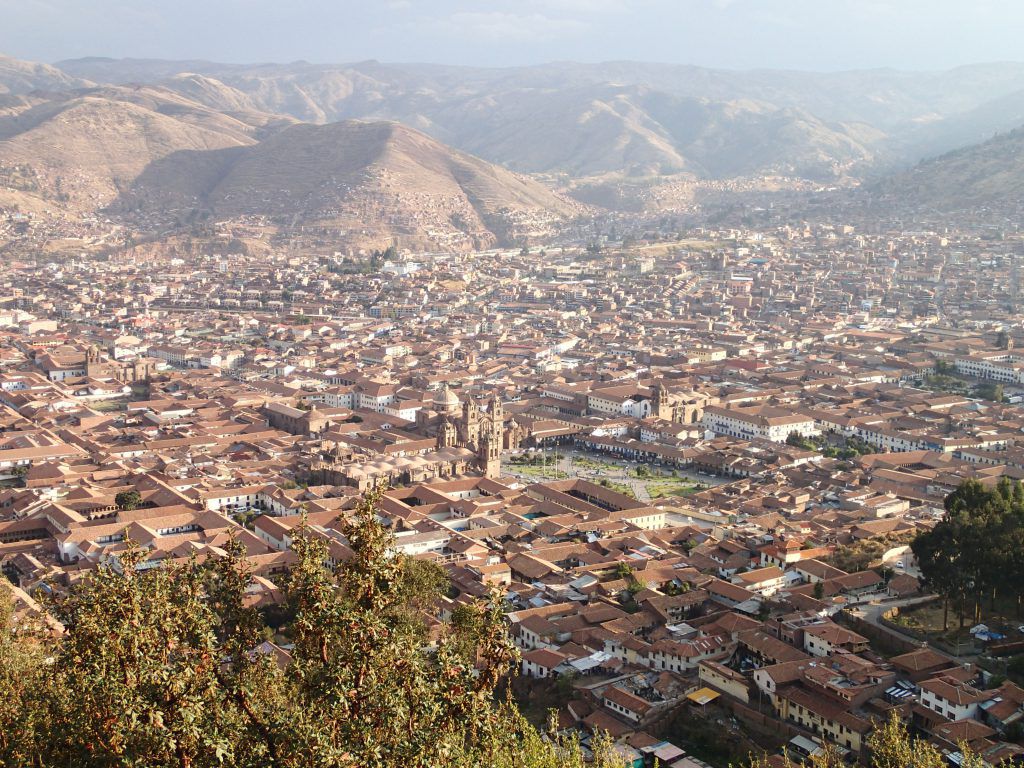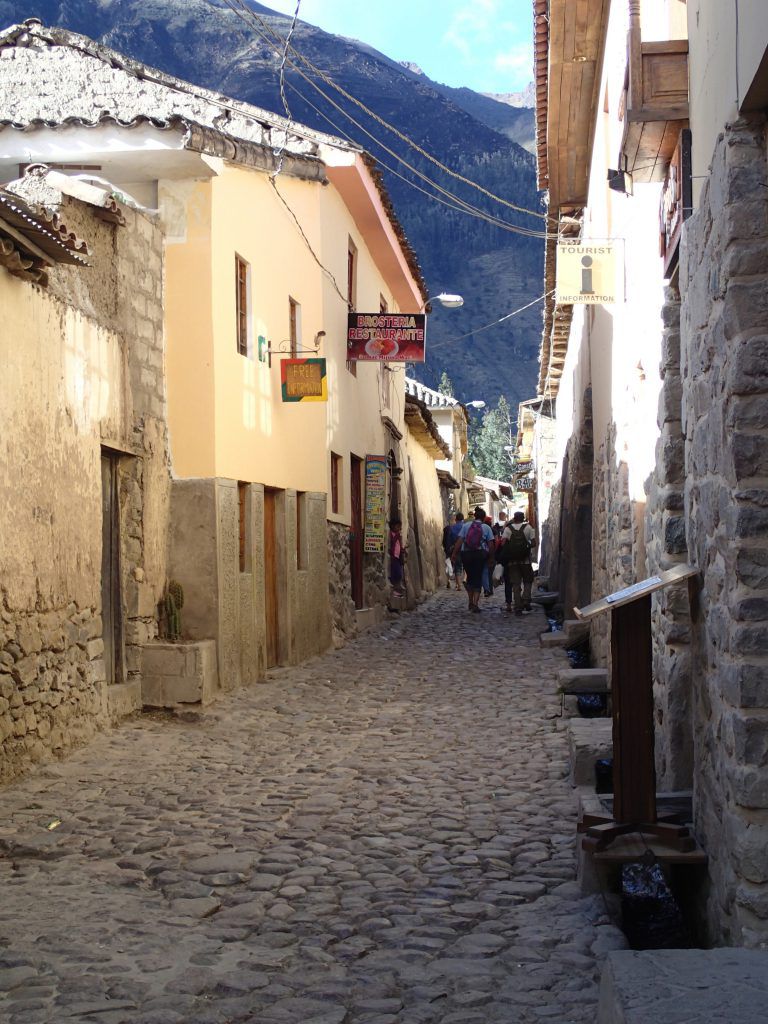Fueled by coca tea and an explorer’s curiosity, I discovered the beauty of Peru’s Sacred Valley and its cuisine. From the red tiled roofs and ruins of Cusco to the Urubamba River to the view of Machu Picchu from the Sun Gate, I climbed countless stairs, gasped for breath at unforgettable vistas, and guiltlessly savored the rich food and drink.
If you are an adventurous, active nomad, you too can explore the Sacred Valley, but don’t miss these highlights, nor skip a meal. Each and every bite leads you to further understanding of the Incas, the land, and the fusion with all of the cultures making Peru what it is today.
In as little as five days, start in Cusco, the capital of the Inca Empire, and its elevation of 11,000 ft. Whether young, old, athletic, or not, the elevation’s effect will make you tired, perhaps with a slight headache, and shortness of breath. The common cure is to drink coca tea, but some need a combo of coca tea and elevation medication commonly marketed under the name Diamox. Don’t be scared. Take things nice and easy the first day for your body to adjust.
With that advice, the first day in Cusco can be done on foot starting with the Inca ruins of Coricancha, which was an important Sun Temple of the Incas. The sheer size of the ruins highlights the role of Inti, the Sun God, as well as the opulence of the Inca Empire. In fact, at the time of the Spanish arrival, the temple’s walls were covered in gold. However, in typical conquistador style, the Spanish took over, emptied the gold, and built atop a religious building of their own, the Santo Domingo church.
From Coricancha, continue up the Main St, Sol to the Plaza de Armas with its fountain, cathedral, and surrounding square filled with beautiful balconies and restaurants. A great place for lunch is Tunupa, which specializes in local cuisine and favorites such as alpaca, a very lean meat, potato dishes called causas, rich corn and potato soups, and the protein salad of the Incas, quinoa. You can choose from its buffet or eat lighter off the menu. The most intimate tables with a view of the Plaza are in the balcony, but they also have family-style tables inside which are great for enjoying the Inca musicians and entertainment. Recommended beverages to wash down your first meal in Cusco would be its local beer, Cusqueña, or a pisco sour, which is the Peruvian national cocktail, made from pisco, lime juice, sugar, egg white, ice, and a splash of bitters.

For those with energy for another activity on day one, take a taxi to Sacsayhuaman (pronounced similar to Sexy Woman), another Incan architectural feats. There you will be boggled by the size of the stones. It puzzles most as to how the Incas constructed this military fort and temple without the use of machines. To continue in its Incan culture and honoring Inti, every June Sacsayhuaman hosts a Winter Solstice Festival where all of Cusco and the Inca leaders ask the Sun God for a good year. Whether for its architecture, historical value, or other, the views from Sacsayhuaman of Cusco are tremendous. It is certainly worth the trip up from town. You will witness the grandness of Cusco, unlike the seemingly small town feel from exploration on the narrow streets around the Plaza de Armas. As a note, you may want to buy the Boleto Turistico (Tourist Ticket for entrance to Sacsayhuaman as well as Pisac, Ollantaytambo, and more) for a discounted price along your discovery of the Sacred Valley.
Early to rise and ready to discover more, make sure to continue drinking the coca tea before setting out for the Scared Valley and the Urubamba River Valley. Breaking up the trip into sections is wise with a stop for shopping and a snack at Pisac, which is a quaint, terrace-farming town along the Urubamba River. The town hosts a daily market in the Main Square with local alpaca woven items ranging from hats, gloves, rugs, and sweaters as well as handmade silver jewelry. Along the market, there are main cafes for a coca tea, beer, or snacks. Try Inti Killa for a taste of local cuy, oven-roasted guinea pig, where the kitchen and oven is open for diners to view. The location is hidden off a corner of the main square aside a silversmith. Additionally, the restaurant offers an array of empanadas, or meat pies, with fillings such as ham, cheese, chicken, beef, or even a popular sweet combo of banana and cheese. Whether you dare to try the local delicacy of cuy or one of their many empanadas, they offer a local non-alcoholic beverage that is sweet and refreshing for mid-day called chicha morada. This is made from juicing the purple corn of the area.

From Pisac, you will shortly arrive to Ollantaytambo, a backpacker paradise with hostels, back road outfitters, hiking gear stores, and restaurants galore. This is the most popular start of the 4-day Inca Trail hike as well as the train station for Machu Picchu. With its narrow, winding cobblestoned streets, it is worth an afternoon to get lost in Ollanta (as the locals shorten the name). Plus, you can climb the ruins to get your body ready for your following adventures in the Lost City of the Incas. Don’t be shocked if you need to stop frequently.
Read full article and see more photos of Machu Picchu and foodie finds along the way on GoNOMAD
As always, stay up-to-date on more adventure travel stories and tips from Peru, Kauai, Quebec, Cuba, Finger Lakes, and more by connecting with me on Facebook, Twitter, Google+, and YouTube.
Here’s to more good times and good stories.
